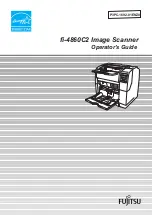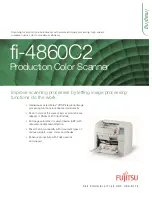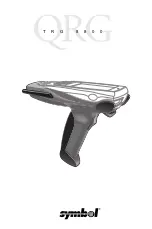
TIP
The focus assist feature works best when using negative film types,
as negative is generally sharper with the most grain detail.
To get the most from the focus assist feature, set the viewer to full resolution.
Simply click on the options settings at the top right corner of the viewer and
select ‘Full Resolution Preview’ from the drop down menu.
It’s worth mentioning that full resolution preview will remain set until you
choose to disable it. The setting is very GPU intensive and can affect the
performance of the viewer, for example there may be some frame lag, so it
may be helpful to use full resolution for checking focus, then turning it off for
better performance.
9
Closing the Scanner Doors
For the best quality scan we recommend closing your scanner’s sliding doors.
The doors are designed to gently close when they are almost shut, so all you need
to do is slide them towards each other until you feel the spring mechanism take over.
When closed, the doors will block any light from entering the film gate.
TIP
Your scanner’s high quality light source eliminates light pollution in all but
the most brightly lit workspaces. Because film is quite shiny it can reflect lights
in the ceiling which may show up as blotches in your capture. You can avoid
this by keeping the scanner doors shut while scanning.
Now that you have laced your film, set the tension, focused your image and closed the scanner
doors, you can start capturing!
Please refer to the Cintel section of the DaVinci Resolve reference manual for details on
calibrating the light source, setting the stabiliser, and the capture palette settings for capturing
images. The DaVinci reference manual also details how to sync optical audio and shows how
you can manage your capture files when scanning.
If you are looking for information on how to maintain and service your scanner, including
detailed information about your scanner’s technical specifications, refer to the ‘Servicing’
and ‘Specifications’ sections near the end of this manual.
Using Your Scanner
Wind Types
The ‘wind type’ refers to the loading and unloading position, as well as the turn direction of film
on your scanner’s feeding and taking spools. As you can see in the diagram below, an ‘A’ wind
refers to film loading/unloading from the top of the spool, while a B type loads or unloads from
the bottom. This is true for both the feeding and taking spools.
19
Using Your Scanner
Summary of Contents for cintel
Page 99: ...Cintel Scanner インストール オペレーションマニュアル 2020年5月 日本語 ...
Page 196: ...Manuel d utilisation et d installation Mai 2020 Français Cintel Scanner ...
Page 293: ...Installations und Bedienungsanleitung Mai 2020 Cintel Scanner Deutsch ...
Page 395: ...Manual de instalación y funcionamiento Escáner Cintel Mayo 2020 Español ...
Page 492: ...安装操作手册 2020年5月 中文 Cintel Scanner ...
Page 589: ...설치 및 사용 설명서 Cintel 스캐너 2020년 5월 한국어 ...
Page 686: ...Руководство по установке и эксплуатации Русский Май 2020 г Cintel Scanner ...
Page 783: ...Manuale di istruzioni Cintel Scanner Maggio 2020 Italiano ...
Page 880: ...Manual de Instalação e Operação Cintel Scanner Maio 2020 Português ...
Page 977: ...Kurulum ve Kullanım Kılavuzu Cintel Tarayıcı Mayıs 2020 Türkçe ...
















































